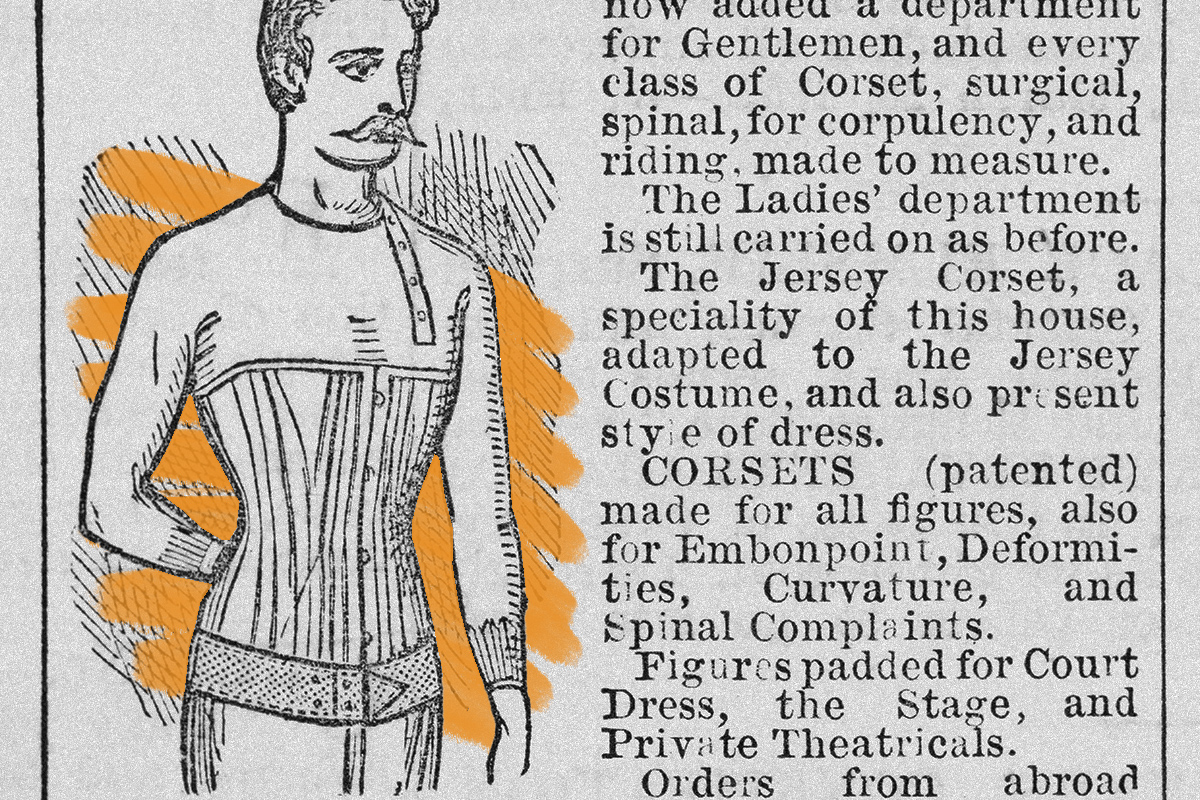Men used to wear corsets.
The classic lace-up, waist-cinching corset is endlessly versatile and an absolute mainstay of any Renaissance fair outfit. The historical garment is generally thought of as women’s wear — but it wasn’t always that way. During England’s Regency era at the turn of the 19th century — a setting you may be familiar with from Jane Austen novels or, more recently, the Netflix series Bridgerton — men’s fashion moved away from powdered wigs and elaborate, stiff fabrics. Dandyism came into style in Europe, and the most fashionable gentlemen went for a sleek, streamlined look as ornamentation took a backseat to precise tailoring. Collared linen shirts, fitted trousers, and waistcoats were all the rage.
Just like how some shapewear can make a dress drape just so, the cut of a bespoke jacket and breeches could be complemented by the right corset. To get the exact shape they were after, well-coiffed men would not only wear corsets, but also add padding around their chest and shoulders. The famously plump George IV was known to wear a corset, too — one almost made him faint at his 1821 coronation.
Exaggerated silhouettes remained in fashion until the 1830s, but corsets weren’t necessary for the increasingly understated mainstream menswear of the 1840s. While dandy culture never fully went out of style — famed dandies such as Charles Baudelaire and Oscar Wilde rose to prominence after 1840 — the Regency-era masculine corset did.







